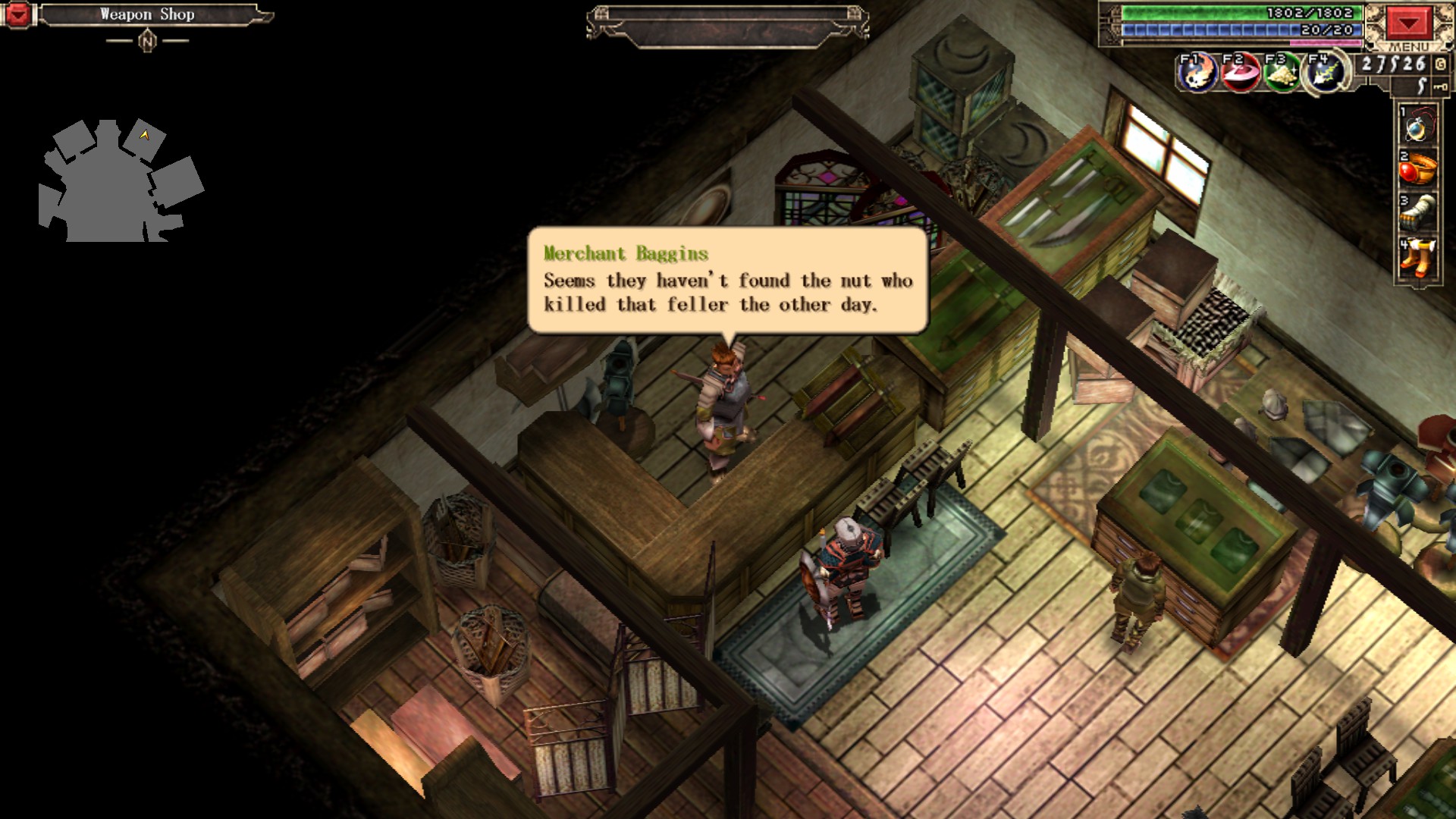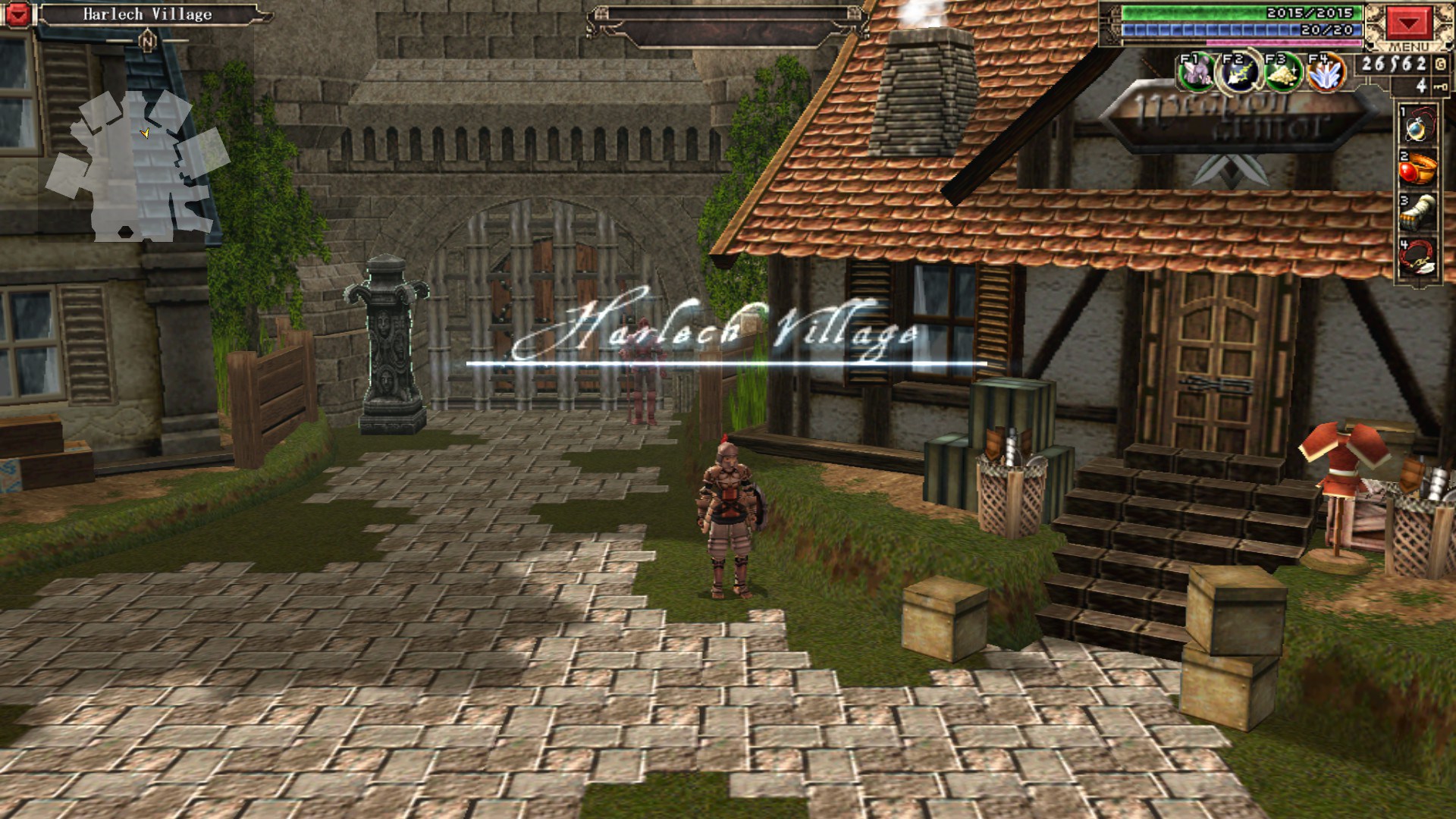Search
[{{{type}}}] {{{reason}}}
{{/data.error.root_cause}}{{{_source.title}}} {{#_source.showPrice}} {{{_source.displayPrice}}} {{/_source.showPrice}}
{{#_source.showLink}} {{/_source.showLink}} {{#_source.showDate}}{{{_source.displayDate}}}
{{/_source.showDate}}{{{_source.description}}}
{{#_source.additionalInfo}}{{#_source.additionalFields}} {{#title}} {{{label}}}: {{{title}}} {{/title}} {{/_source.additionalFields}}
{{/_source.additionalInfo}}- Details
- Category: Computer
- By Jason Gress
- Hits: 6035
Xanadu Next (PC)

Xanadu Next
Developed By: Nihon Falcom
Published By: XSEED Games
Release Date: November 3, 2016
Available On: Windows, N-Gage
ESRB Rating: Teen for Mild Violence (N-Gage version); PC version not rated
Genre: Action Role-Playing Game (RPG)
Mode: Single Player
MSRP: $19.99
(Humble Store Link)
Thank you XSEED Games for sending us this game to review!
XSEED Games seems determined to plow the depths of Falcom’s excellent back catalog, and bring it over for our consumption and enjoyment. Xanadu: Dragon Slayer II was among Falcom’s first ever action RPGs, and indeed among the first ever action RPGs period, with a release date in 1985. Xanadu Next was released in 2005 in Japan as a celebration of Xanadu’s 20th anniversary. They release a new Xanadu each decade in recent years, with the 30th celebration being Tokyo Xanadu, which the West is due to get in 2017 via Aksys Games.
Hardcore Falcom fans have long known Xanadu Next is a fantastic game; so much so that they released a fan translation patch several years ago. XSEED has worked with fan communities before on translations, and they did it again for this one. Here, we have a professionally edited, tweaked and modified version of the game optimized for modern computers. It shows that the fine folks at XSEED are very clearly hardcore Falcom fans themselves, as they so lovingly bring these games over for a larger worldwide audience.
Xanadu Next takes place on the island of Harlech, where passersby often see an image of Castle Strangerock in the fog. Charlotte, a scholar trying to make a name for herself, recruits one of her childhood friends, a knight, to join her in her quest to determine the secrets of the island and this castle. What starts out as leisurely exploration, soon becomes something much more.
As one of the last knights alive in this era where knights are no more, our hero (you name him) explores his first set of ruins. Here, he finds a powerful treasure, and his life is very nearly stolen from him, as is what he found. This near death injury leads to our gravely injured knight being kept alive by magic and powerful spirits called Guardians. These Guardians are like deities that grant powers to those who are bound to them. The people in this town baptize their children, and give them a Guardian that sticks with them their entire life, and grants them unusual power or skills in a specific area. Well, it is one of these Guardians that keeps our hero’s life in the balance. It is only the legendary Dragon Slayer sword and its incredible power that can help him live a normal life now.

Strong Points: Absolutely fantastic soundtrack; interesting game world, with a backstory that is truly engaging; fun action, with many different play styles possible; skill, guardian, and level system makes grinding fun
Weak Points: A few bugs; dated graphics; control scheme is meant for keyboard + mouse play, but gamepad works fairly well, with some caveats
Moral Warnings: Blood sprays when some enemies are hit; some women wear very skimpy outfits showing lots of cleavage; words ‘hell’, ‘b*st*rd’, and ‘d*mn’ used; icons like hexagrams present; guardians are spirits that protect and enhance people in the village, and people craft idols to them; enemies include goblins, wizards, skeletons, and other undead
Every time I start up a new Falcom game, I am forced to reckon with why I have come to love their games so much. First, the soundtrack hits you like a ton of bricks with excellence galore. Then the world building, art style, loving polish, and fantastically crafted action keeps on drawing me in. And such is how it goes. This game is no exception.
The soundtrack, to put it simply, is absolutely fantastic. All Falcom games I have played are something special in that regard, and this is an excellent example of that. Unlike many of their other games, there is no anime or feel good here. Each song is ambient, moody, and appropriate, and brings about proper levels of brood, peace, or tension. The Harlech town theme is one of my favorite town themes in quite some time.
But I’m getting ahead of myself here. Xanadu Next is an isometric, 3D third person action RPG where you explore the island with its many interconnected passageways, while attacking the many monsters that get in your way. As you explore, you find various treasures as well as pieces of lore that Charlotte (often abbreviated Char) can translate for you. There are weapons to both buy and find, as well as various artifacts which can help you traverse through the world by granting you a new skill or act as a key for new areas. There are also Guardian cards which give you special bonuses when activated.
The Guardian cards are an important part of the strategy in Xanadu Next. Each card gives some kind of bonus, from improved item effects, to bonus hit points, to extra experience, and more. Some of them, like the one which grants improved buying and selling prices, or the one which improves skill learning speed, are very handy. Of course some of the end game Guardians are extremely powerful as well.
There are three major things that require leveling: you, your Guardians, and your weapons. Each Guardian becomes more effective as they level, until they hit a maximum. Each and every weapon can also be leveled. Here, it’s called proficiency. As you get better with a weapon, you both do more damage, and start to learn the skill embedded within. Some skills have active effects, while others are passive. But in order to collect all of the skills, you will have to wield each of the thirty weapons to at least 100% proficiency, while optionally going up to 200% if you continue to use it.
You can equip up to four skills at once, as well as up to four items. Equipped items, like skills, can have either active or passive effects. If you choose something like a potion, it can then be activated with a hotkey; otherwise, you have to go to the item screen during combat, which must be managed in real time. It’s a tricky balance, but I found that if I didn’t wait until near death, I could get away with using the inventory.

Higher is better
(10/10 is perfect)
Game Score - 86%
Gameplay - 17/20
Graphics - 8/10
Sound - 10/10
Stability - 4/5
Controls - 4/5
Morality Score - 73%
Violence - 6/10
Language - 7/10
Sexual Content - 6.5/10
Occult/Supernatural - 7/10
Cultural/Moral/Ethical - 10/10
The game world and dungeons are fully interconnected. There is a clear loop around from the first few dungeons, and even through the last one there is more than one way to get there. There are always monsters awaiting your sword, and the game world intersperses combat and puzzle challenges throughout. There are many secrets waiting for you, and there are also reasons to backtrack to earlier areas.
Among those secrets are tablets and memoirs, which is how the world building and story lore is exposited. The quality of the translation is very well done, and feel appropriate for the dark and foreboding setting. I found myself drawn to the setting and genuinely looked forward to having the next piece translated. They are of decent length and interesting.
At the end of each major segment, as is often the case, there are bosses. They are appropriately challenging and fun to play, though nowhere near Ys difficulty. Once I figured out how to hurt them, it always felt fair and reasonable to beat them. And it’s usually not too difficult to add an extra level or two, if needs be. Worst case, it is very easy to add a stack of potions to your item bar and have at it.
Graphically, the game is clearly from 2005. They (not sure if added by XSEED or not) did a good job with the graphics options by allowing you to choose the internal resolution, which is a form of upscaling/antialiasing. So it probably looks as good as you can expect from a game of this age. It’s also a shame that Microsoft’s DirectX 8 support in Windows 10 is imperfect as well; there is frame rate stuttering that is apparently common with most or all games from that era. I found a useful workaround though; if you increase your pre-rendered frames (4 was the value I tried) it makes it a lot smoother. You can also try various DirectX 8 wrappers which make a big difference, but they introduced crashes for me. I also experienced an odd bug near the end of the game with a certain character flickering wildly. It was humorous, but not game breaking.
I prefer the gamepad controls over keyboard and mouse, though both have pluses and minuses. I think the Steam Controller is the best of both worlds, though. Inventory management is much better with the mouse, and combat and platforming (with one exception) is more fun with the gamepad. Unfortunately, inventory management is done using a gamepad with a virtual pointer controlled by the sticks, which is hardly ideal. The Steam Controller seems to be the best because you can do all combat with the sticks and buttons, while assigning the mouse pointer and buttons to the touchpad and triggers. This way you can maneuver through your inventory much faster than a normal gamepad. On the other hand, having skills activate with a button press is also quite handy on the mouse + keyboard, though the Steam Controller can emulate that, also. The only gamepad gotcha is that some platforming that requires long distance floating with the wing boots works much better with the mouse. The Steam Controller can help with that, too.
When it comes to appropriateness, there are a few marks off. There is violence, as is expected. The enemies splat blood when they die, but it does not pool; it dissipates in the air. Enemies include goblins, wizards, humans, and undead like skeletons and others. There is magic used, both by the player and enemies. There is an evil dragon, and a ‘black bride’ that is his wife. There are Guardian spirits, and the people make idols to them. Children are baptized to a specific Guardian when they are young. The main character can change Guardians often. I noticed a hexagram used in several spots, and other ‘mystical’ symbols, though not any that I recognized. One character is often drunk at the bar. Some female characters wear obnoxiously skimpy outfits, but the 3D models themselves are laughably low polygon, so while it’s obvious they are wearing skimpy outfits, I think few would find them alluring. Words like ‘hell’, ‘d*mn’ and ‘b*st*rd’ are used.
Xanadu Next, despite its age, is a fantastic action RPG that is worth checking out even in this modern age. Good games don’t stop being good, even if the presentation isn’t. The graphics are decent, the story and world are very interesting, and the music is phenomenal. The action itself is lots of fun, even if it’s a bit slower paced and easier than a typical Ys game. And yet, it’s different enough to be its own thing. Please consider the appropriateness issues before buying, but beyond that, Xanadu Next is an easy recommendation.








